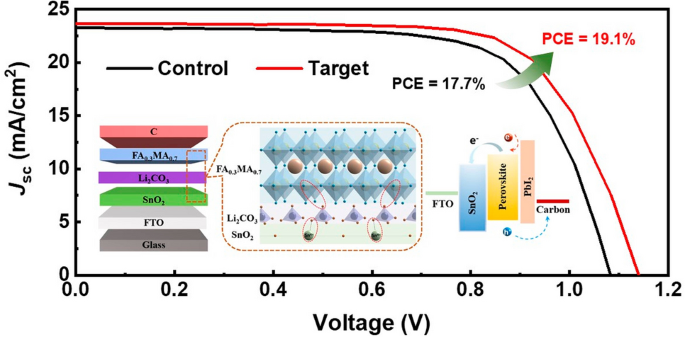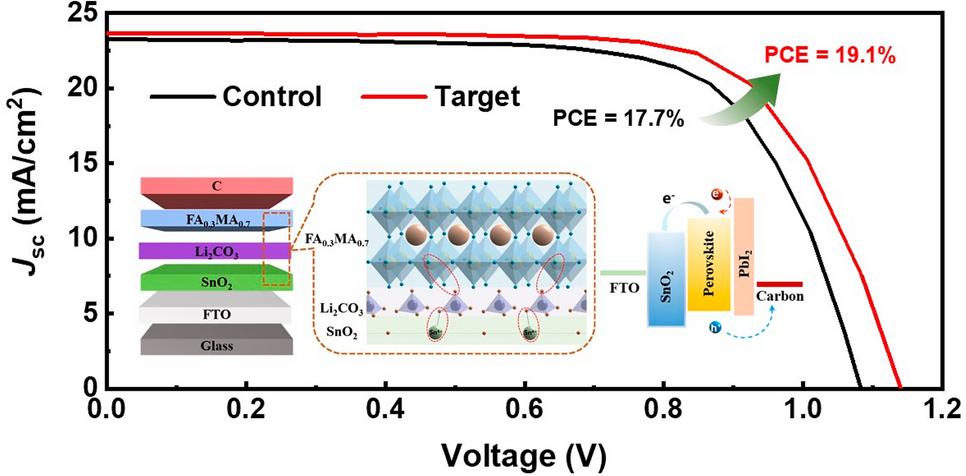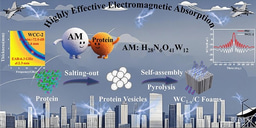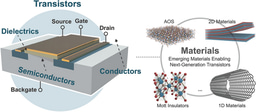Reducing the Voc Loss of Hole Transport Layer-Free Carbon-Based Perovskite Solar Cells via Dual Interfacial Passivation

A breakthrough study in Nano-Micro Letters led by Xian Zhang, Cuncun Wu and colleagues from Hebei University of Technology and Peking University introduces a simple, scalable Li2CO3 surface-modification protocol that simultaneously tames defects at both the SnO2/perovskite bottom interface and the perovskite/carbon top interface of HTL-free, carbon-electrode perovskite solar cells (C-PSCs). The result is a champion device delivering 19.1 % power-conversion efficiency under AM 1.5 G and a record 33.2 % under 2000-lx LED light—while retaining >90 % of its initial performance after 360 h continuous operation without encapsulation.
Why This Research Matters
• Bridging the Voc Gap: HTL-free C-PSCs are intrinsically stable and low-cost, yet their open-circuit voltage (Voc) lags >150 mV behind metal-electrode counterparts owing to rampant non-radiative recombination at grain boundaries and mismatched energy levels. Li2CO3 acts as a dual passivator: (i) it boosts SnO2 electron-transport-layer conductivity and lowers its work function for smoother electron extraction, and (ii) it induces controlled PbI2 crystallites at perovskite grain boundaries that plug surface traps and block parasitic hole back-flow, elevating Voc from 1.085 to 1.142 V.
• Indoor PV Champion: Under weak 3000-K LED light, the same device architecture delivers 33.2 % PCE—among the highest ever reported for carbon-based cells—making it ideal for powering IoT sensors, wearables and indoor energy-harvesting systems.
• Ambient Durability: Unencapsulated devices retain 90 % of initial efficiency after 360 h 1-sun maximum-power-point tracking and show negligible degradation after 30 days in 15–30 °C, 20–30 % RH air, underscoring the robustness of the carbonate-induced passivation.
Innovative Design and Mechanisms
• Bottom Interface Optimization: Li2CO3 spin-coated on conformal SnO2 increases carrier density and flattens the energy landscape, evidenced by a 0.15-eV larger light/dark surface-potential contrast in KPFM and a 20 % reduction in trap density via SCLC measurements.
• Top Interface Grain Engineering: Thermal annealing drives Li2CO3-released CO32- to selectively react with MA⁺, forming insulating PbI2 crystallites that decorate grain boundaries without disrupting bulk perovskite integrity—confirmed by SEM, GIWAXS and ¹H NMR. The PbI2 layer simultaneously passivates surface traps and acts as an electron-blocking layer, cutting recombination and dark saturation current.
• Scalable, Ambient Process: All steps—CBD SnO2, spin-cast Li2CO3, low-pressure perovskite crystallization and blade-coated carbon—are performed in air below 120 °C, fully compatible with roll-to-roll manufacturing.
Applications and Future Outlook
With earth-abundant reagents, low-temperature processing and proven upscaling to 10 × 10 cm2 modules, Li2CO3-dual-passivated C-PSCs provide a cost-effective pathway to both rooftop and indoor photovoltaics. The team is now integrating the strategy into flexible substrates and tandem architectures, aiming for >25 % outdoor and >35 % indoor efficiencies while maintaining the intrinsic stability that makes carbon-based perovskites the front-runner for next-generation, mass-deployable solar technologies.
Follow the Topic
-
Nano-Micro Letters

Nano-Micro Letters is a peer-reviewed, international, interdisciplinary and open-access journal that focus on science, experiments, engineering, technologies and applications of nano- or microscale structure and system in physics, chemistry, biology, material science, and pharmacy.






Please sign in or register for FREE
If you are a registered user on Research Communities by Springer Nature, please sign in